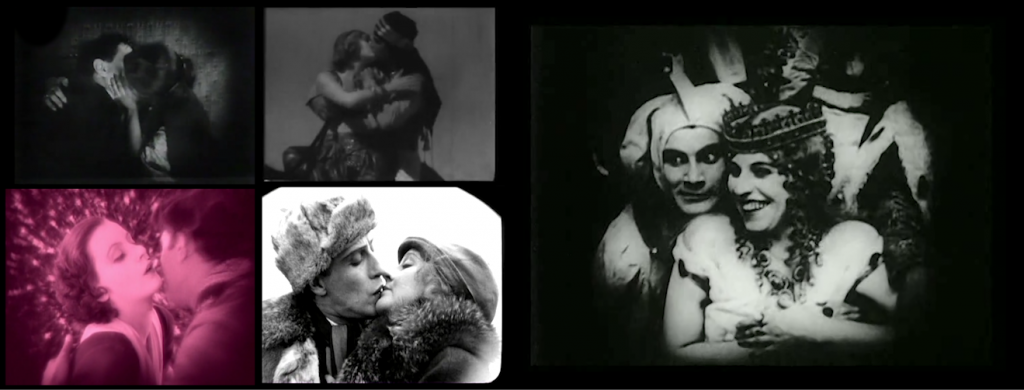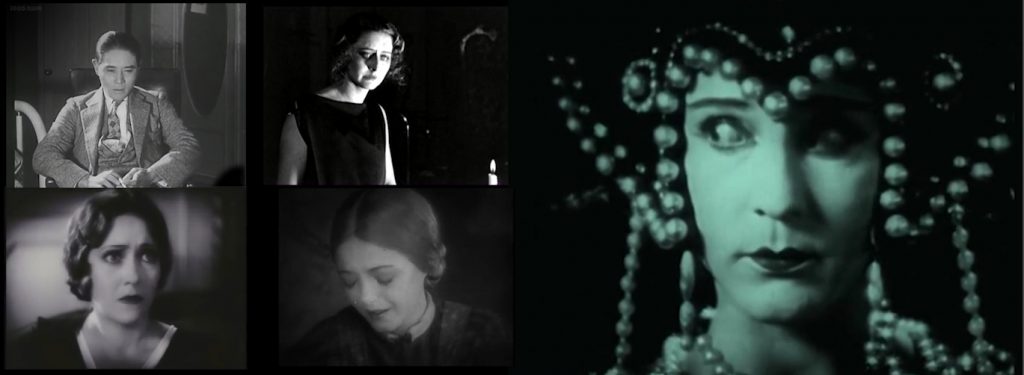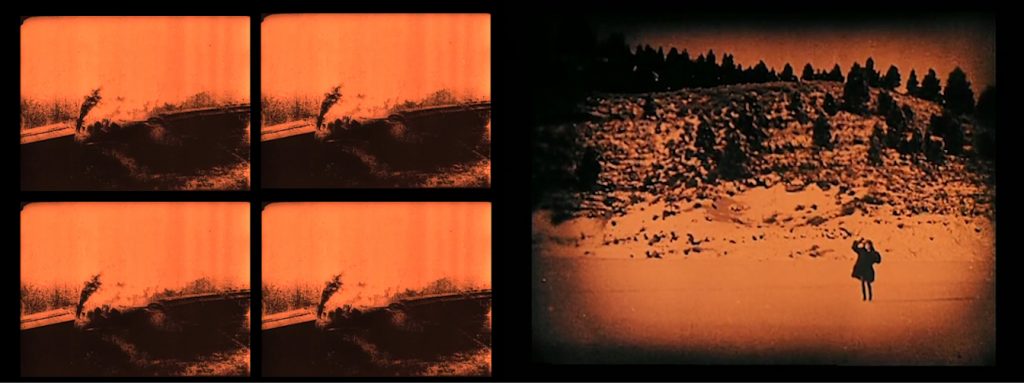with Sophie Trudeau (music)

Walter Benjamin said that if you want to be able to understand history, you have to blast out and freeze single events from the flux. In ghosts along the way we are using this approach to silent films from the 1920s. By isolating central motives of the films and taking them out of their narrative context we create new connections and generate different meanings. Being freed from the constraints of the narrative, the images expose different qualities that have been inscribed in them. We analyze the specific characteristics of that era and try to understand them from our modern times perspective. These images will be projected as one big projection on the wall and single actions will be presented as loops on four cube monitors. An additional cube monitor will focus on intertitles. Both image and sound are created out of material collected in archives. The sound is not used to illustrate the happenings on screen but rather to strip them of their nostalgia. ghosts along the way is a kaleidoscope of images and sounds.
Exposing the musical film by Marie J. Jean
The use of found footage emerged in experimental cinema in the 1970s and grew even more prevalent among contemporary artists during the 1990s. What has seldom been noted in connection with this practice, however, is the particular situation that afforded artists access to inexhaustible source materials that had been previously difficult to appropriate: historical films entering the public domain.5 That availability provided the impetus for Michaela Grill and Sophie Trudeau to make les marges du silence/ghosts along the way (2020), an audiovisual exploration designed especially for this exhibition. It is composed of short clips from the silent film repertoire of the 1920s, spanning German Expressionism, American Burlesque, French, Japanese and Russian cinema, etc. The clips show, simultaneously and in the manner of a typology, bursts of laughter, exchanges of glances and moments of dramatic tension, along with a continual stream of intertitles. The musical component of the installation was created using a similar process. It is made up of sound samples from Trudeau’s personal archive; for example, the sound of one instrument is isolated, then remixed into a new composition. By proceeding with this subtraction of shots and sounds from their original contexts and placing them in a new visual and sound framework, the artists offer a compelling cinematic journey. Consider that, from their inception until the advent of talking pictures, silent film screenings typically had musical accompaniment, performed by a pianist (though sometimes provided by an orchestra or else prerecorded). The music was originally intended to isolate the viewer from external noises—the whir of the projector, audience members’ comments, other ambient sounds—eventually serving more as a way of establishing a single space connecting the space of the theatre, the figurative space of the screen, and the mental space of the viewer. By inviting us into exactly this sort of “organized sound space,”6 the installation in les marges du silence/ghosts along the way heightens our sensory experience of a vanished time.
presentation history:
The Musical Years: 1920–2020 at VOX – Centre de l’image contemporaine Curator: Marie J. Jean
Inside the Frame at Verksmiðjan Hjaleyri, Iceland Curator: Gústav Geir Bollason
nice review by Austin Henderson for esse:



see also Sophie Trudeau / Michaela Grill


